Virtual Field Trip
from virtual-geology.info

Locality 1.3 - Aberystwyth
It is important that you access
this field trip on a laptop or desktop PC. Click on any image to enlarge
it. Explore the area in Google
Maps and Streetview
We are going to study the excellent
cliff (Craig y Fulfran) and foreshore sections at the north end of the promenade.
These are classic outcrops, important in the history of modern sedimentology.
There's a lot to see and do at this location, and we usually spend about three
hours here. We'll start by taking a general look at the section, then zooming
in on some features of interest. Finally, we will measure a log through several
metres of the section. We'll use these data to draw a graphic log, which we'll
then try to interpret.
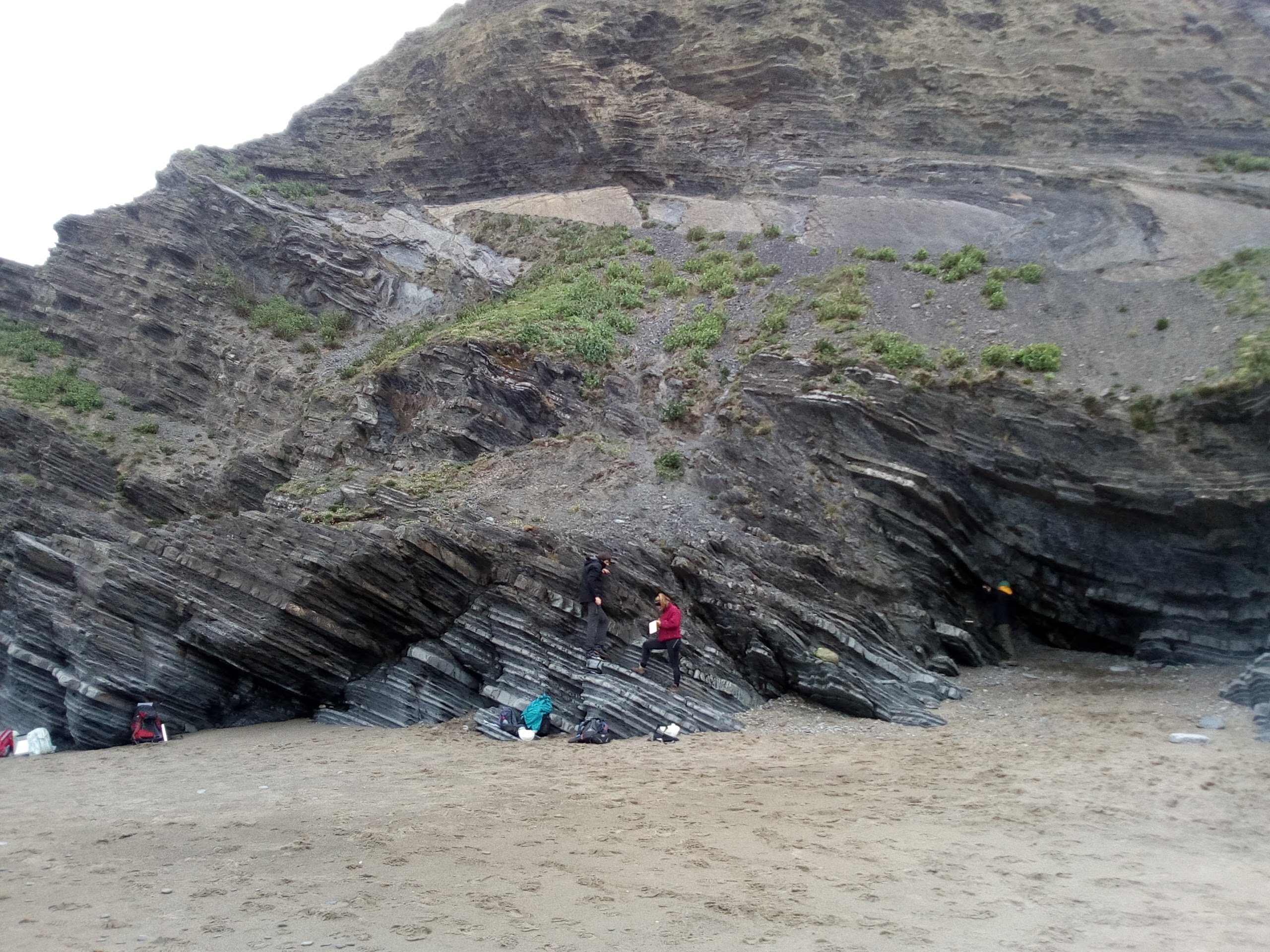
A1. General view of the cliff section. Note the large, sideways-facing fold
higher in the cliff. |
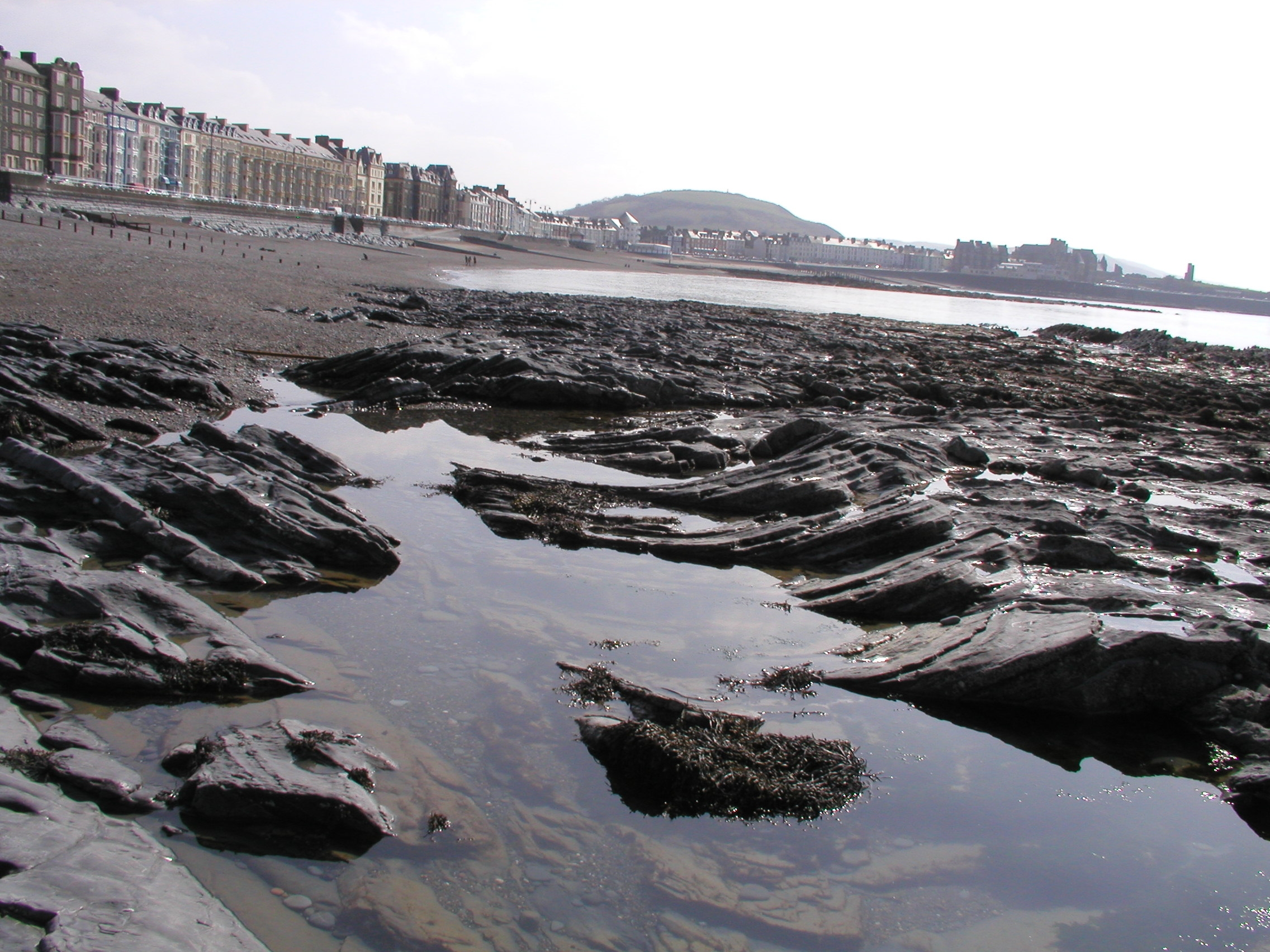
A2. Gentle synform in foreshore outcrops. Fold axes trend SW-NE, and defomation
occurred during
late stages of the Caledonian orogeny. |
|

B1. The cliff section - geologist for scale.
Describe the general appearance of the outcrop, including its height
and lateral continuity of beds.. How many lithologies do you think there
are are, and how can you distinguish them? (photos B2 and B3 may help).
|
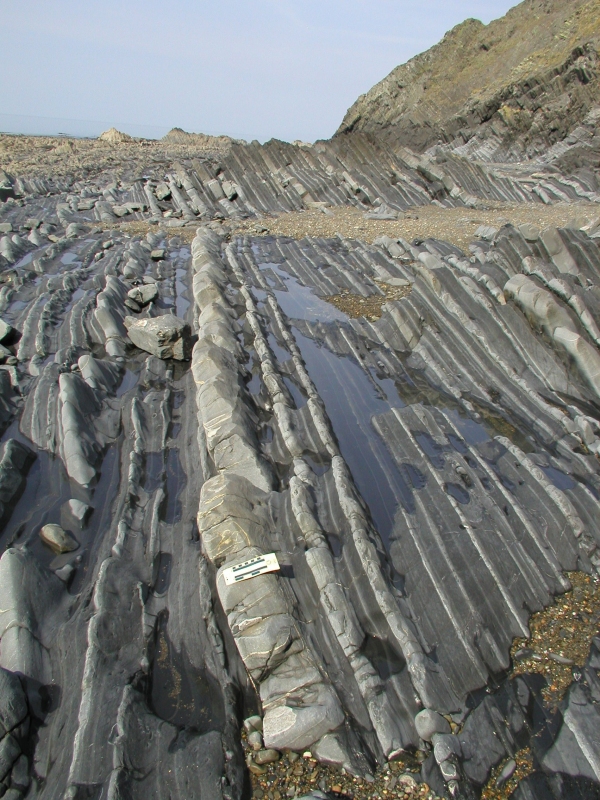
B2. Beds in the foreshore section dip east here.
|
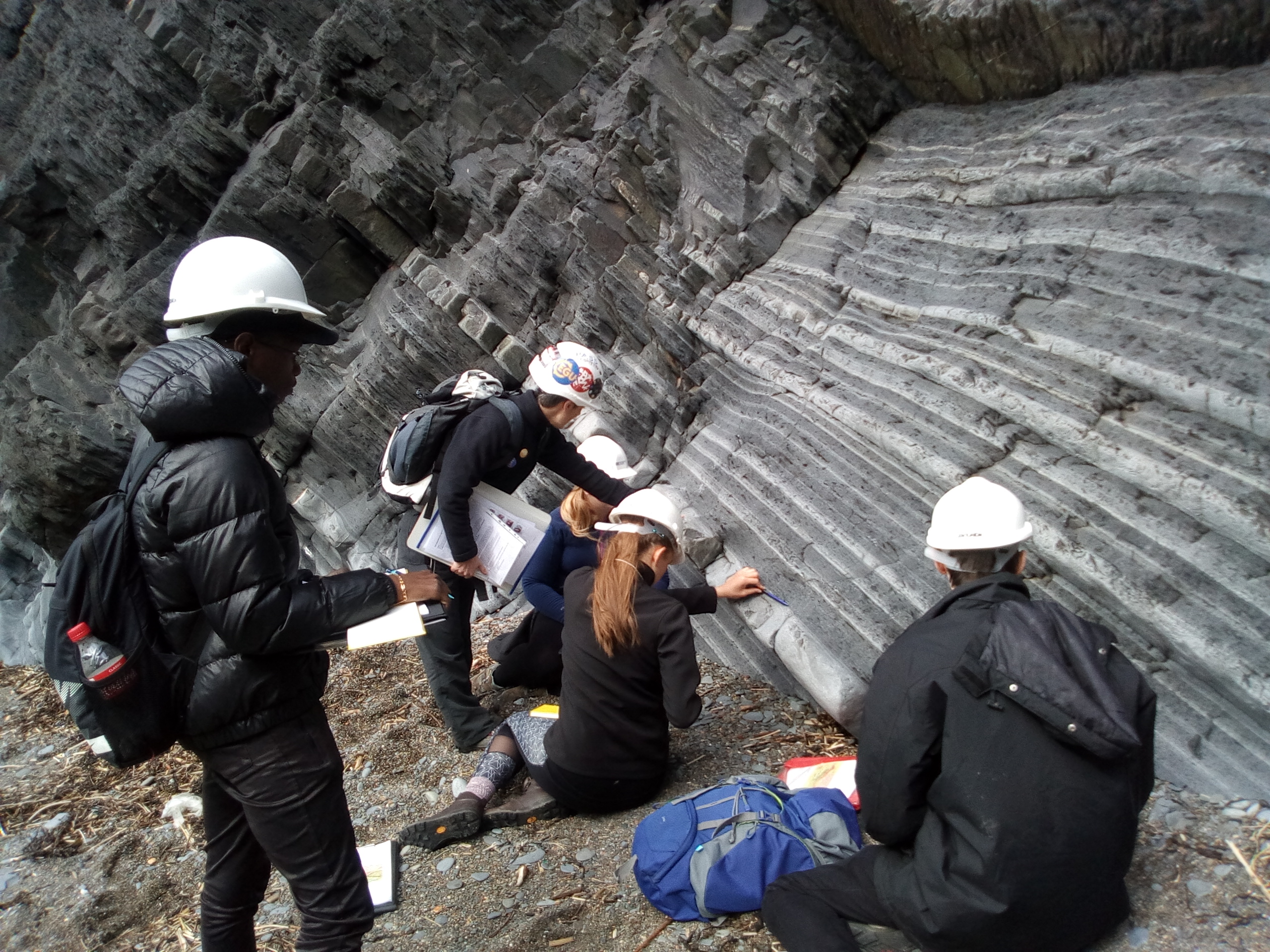
B3. Logging the section at the base of the cliff.
|
The aim of this exercise is to synthesize
information of a variety of different types - for example lithology, thickness
and geometry of sedimentary units, sedimentary structures and palaeocurrents,
fossils and trace fossils (or absence thereof), lateral and vertical changes
etc. From these observations, you should be able to attempt interpretations
of the the processes and environments involved in the formation of the section.
This integrated approach, using all available sources of information, is very
important in sedimentology. You have seen a similar section in a practical earlier
this semester.
Identifying and interpreting sedimentary
structures is an important part of this exercise. If you need to brush up on
these, the best sources are the appropriate chapters in the set books.
Handout: refer to the handout
for today, which contains essential diagrams and information. Don't forget to
use the information in the Field Guide too. Both are available in Course Resources.
Tasks: See today's handout.

Field evidence - zooming in
Study the outcrop photographs below.
Describe and interpret them. Pay particular attention to field relationships
- contacts between units, how units change as you trace them laterally, etc.
Answer the questions and tasks attached to individual photos in your virtual
notebook.
|
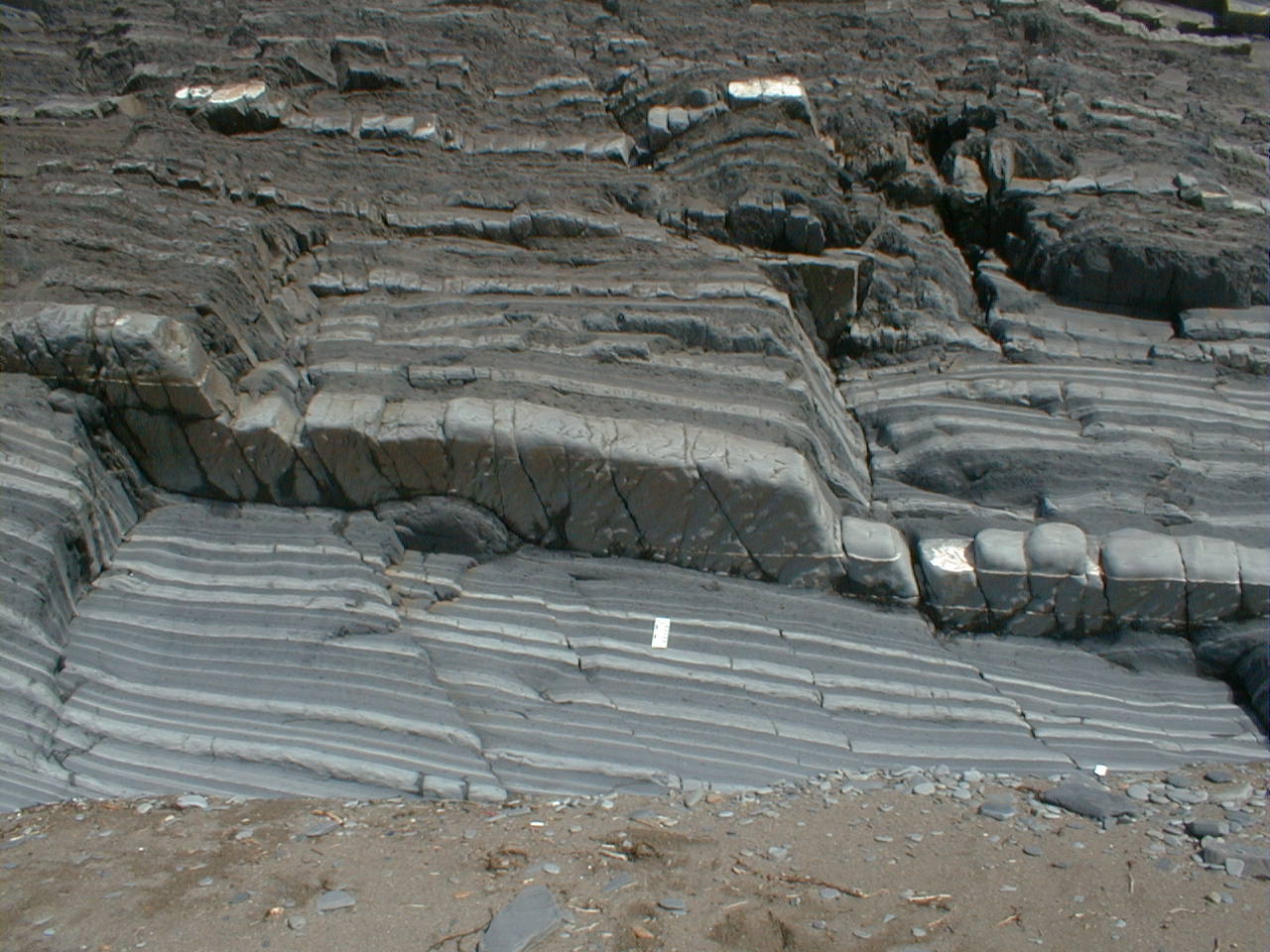
C. Interbedded fine to very fine sandstones (light) and mudstones (dark).
Describe the outcrop. What do the mudstone intervals represent? Remember
that mud compacts much more than sand during burial, so the original sequence
would have had a much greater thickness of mud. What does each sandstone
bed represent?
|
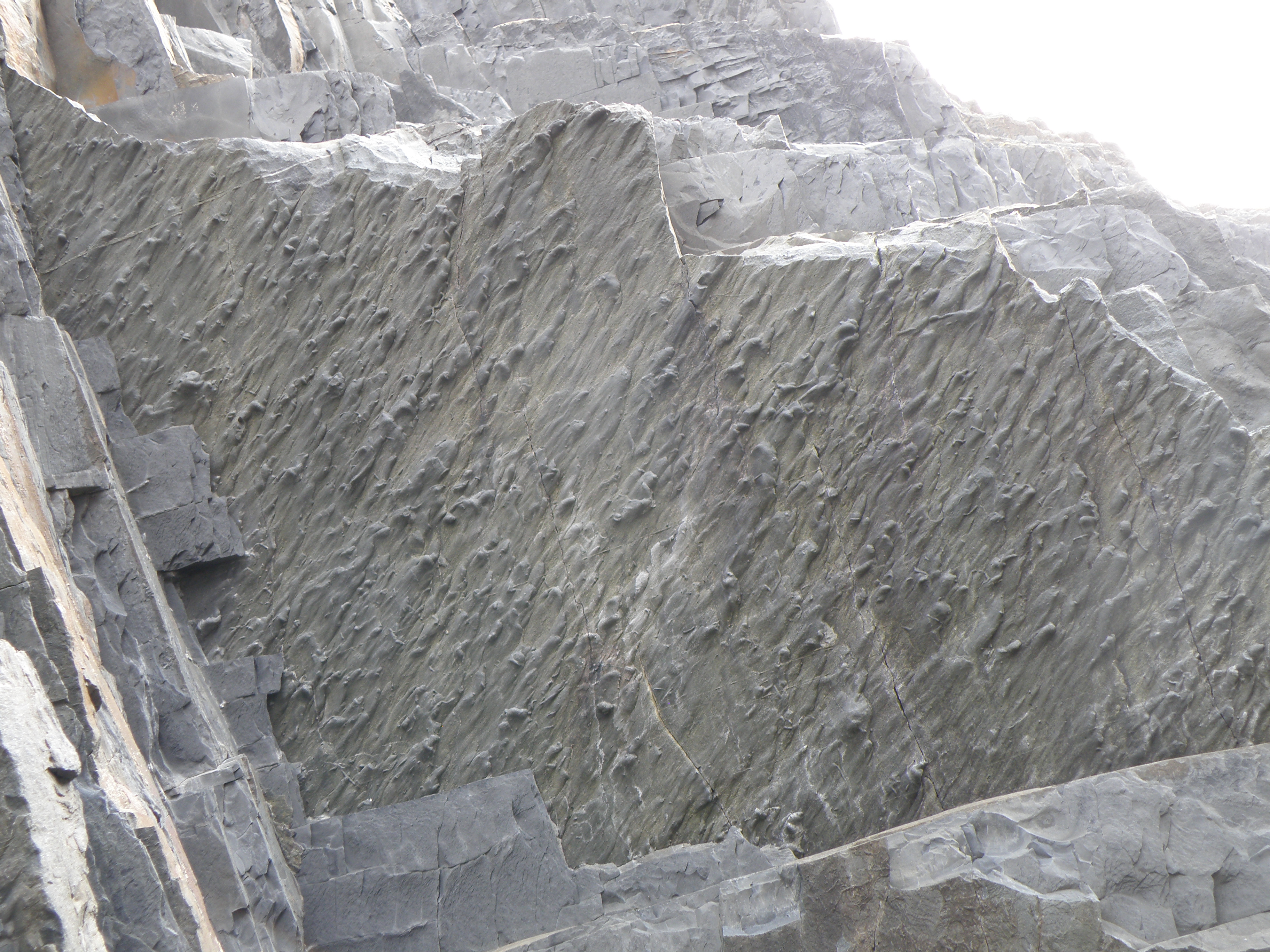
D. Looking up at the base of a sandstone bed. Field of view is ca. 3m
wide
What are these structures? What do they tell us about sediment transport?
|
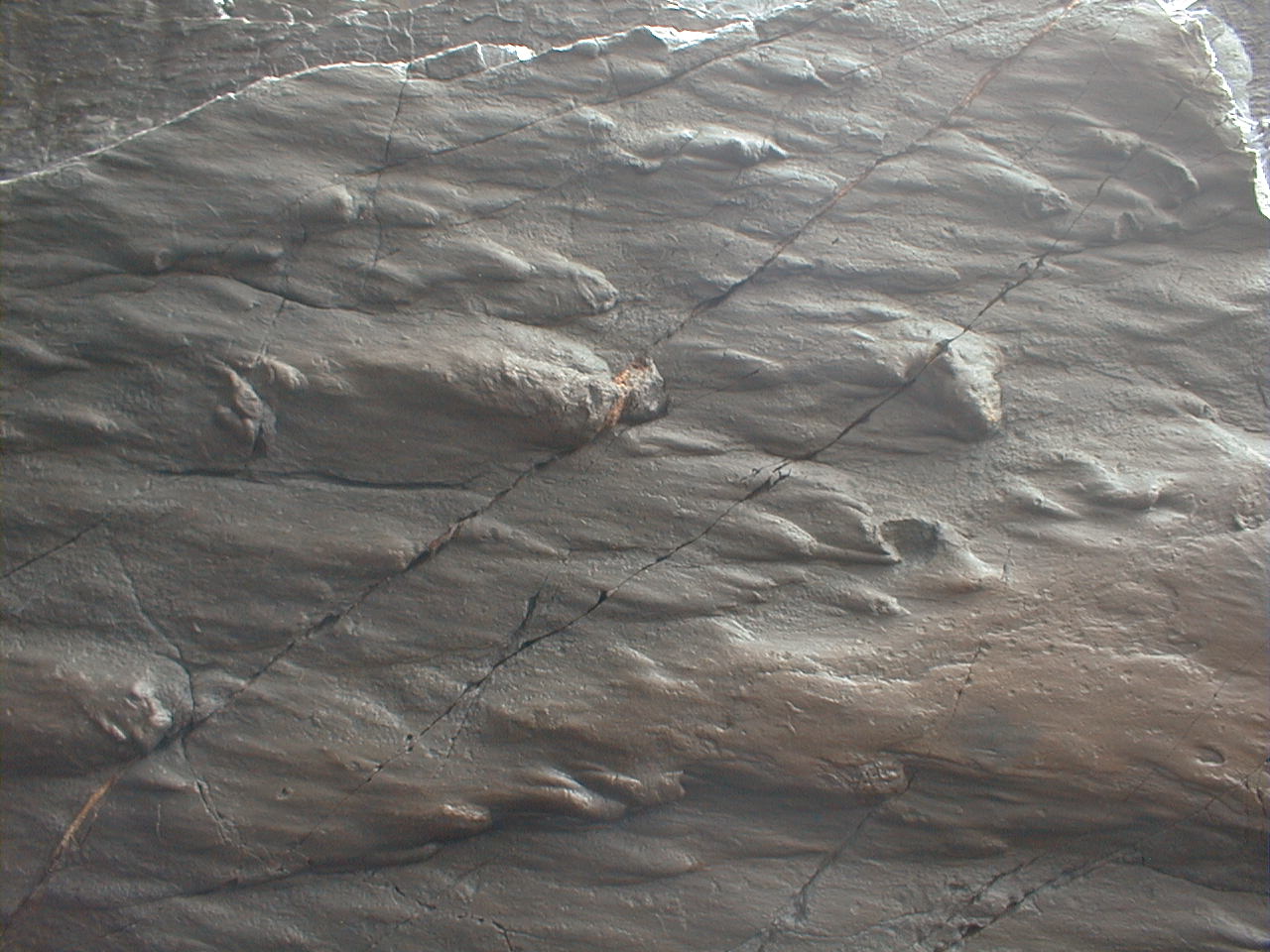
E. Close-up of similar structures on the base of a sandstone bed. |
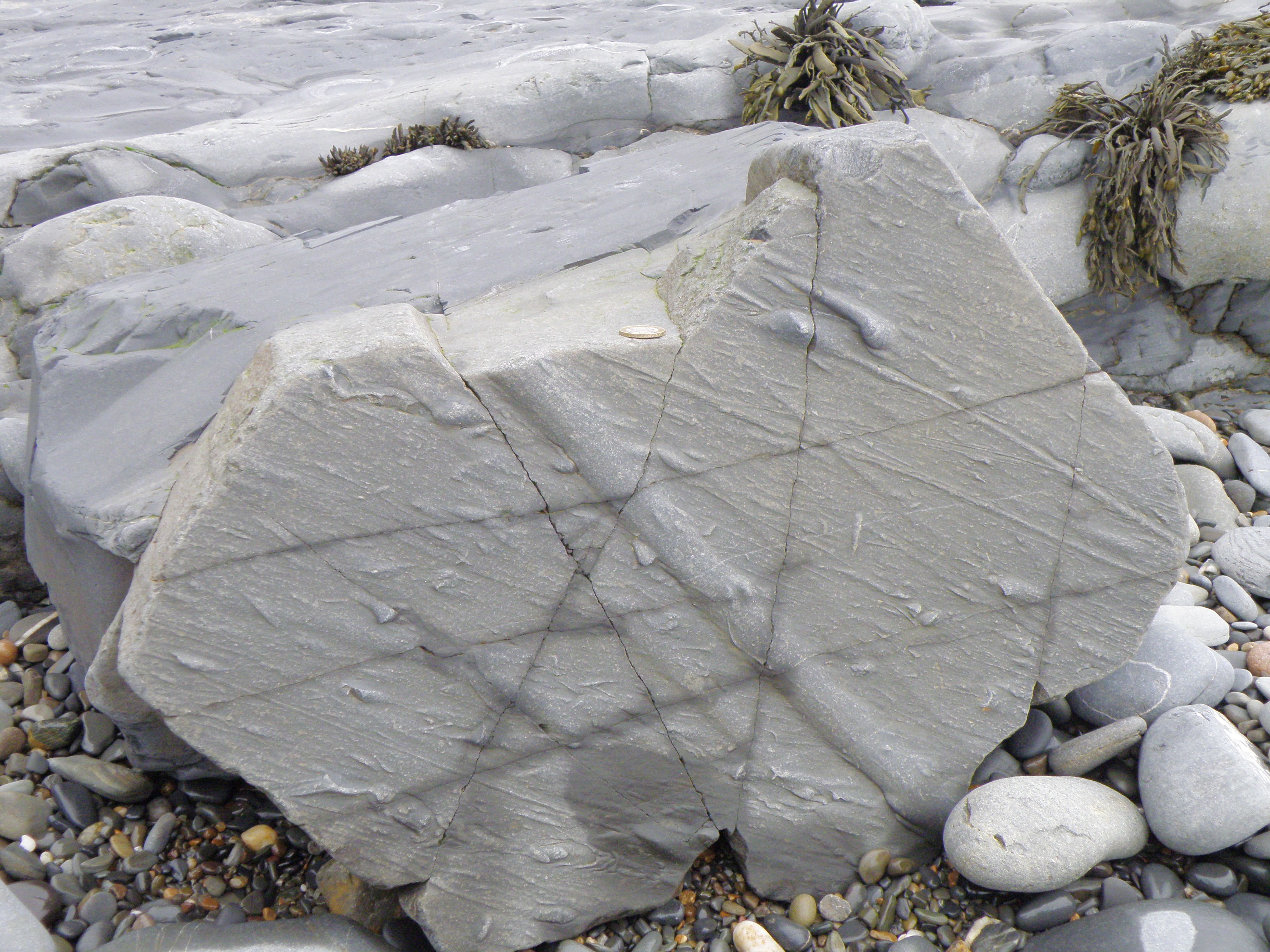
F. Loose block showing a variety of sole structures, preserved on the
base of a sandstone bed.
Describe and identify these structures. What do they tell us? |
|
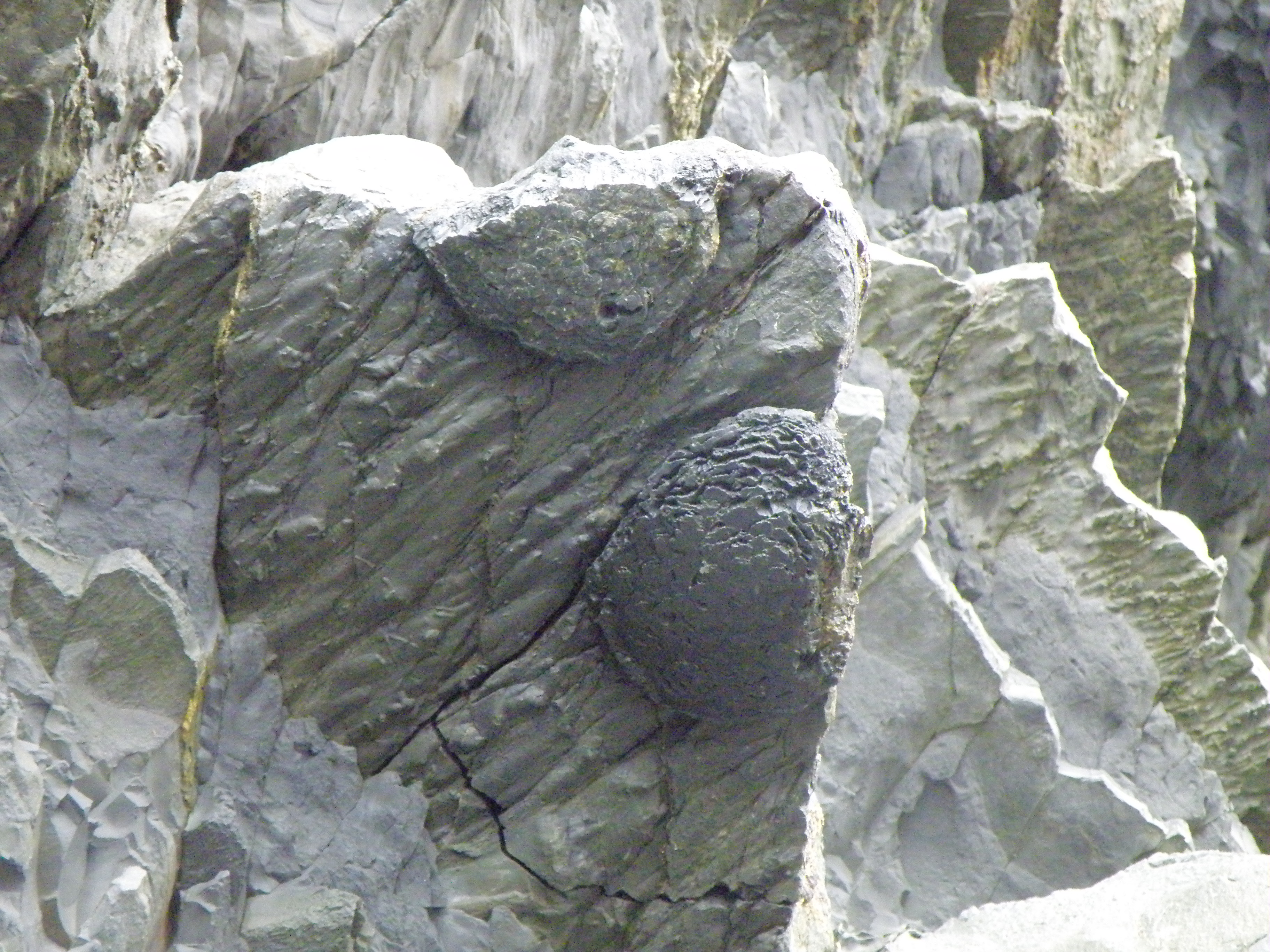
G. On the overhanging base of a sandstone bed are structures similar to
those in photos D and E. We also see features which are commonly developed
in this section at the basal contacts of sandstones. These rounded features
are ca. 40cm diameter; in sections at right angles to bedding, they have
a flattened ovoid shape, due to compaction. Further investigation shows
that they are composed of the mineral siderite, and they contain cone-in-cone
structures (clearly seen in the photo).
What are they, and how and when may they have formed? Think about the
chemical conditions at the sites of deposition and diagenesis.
|
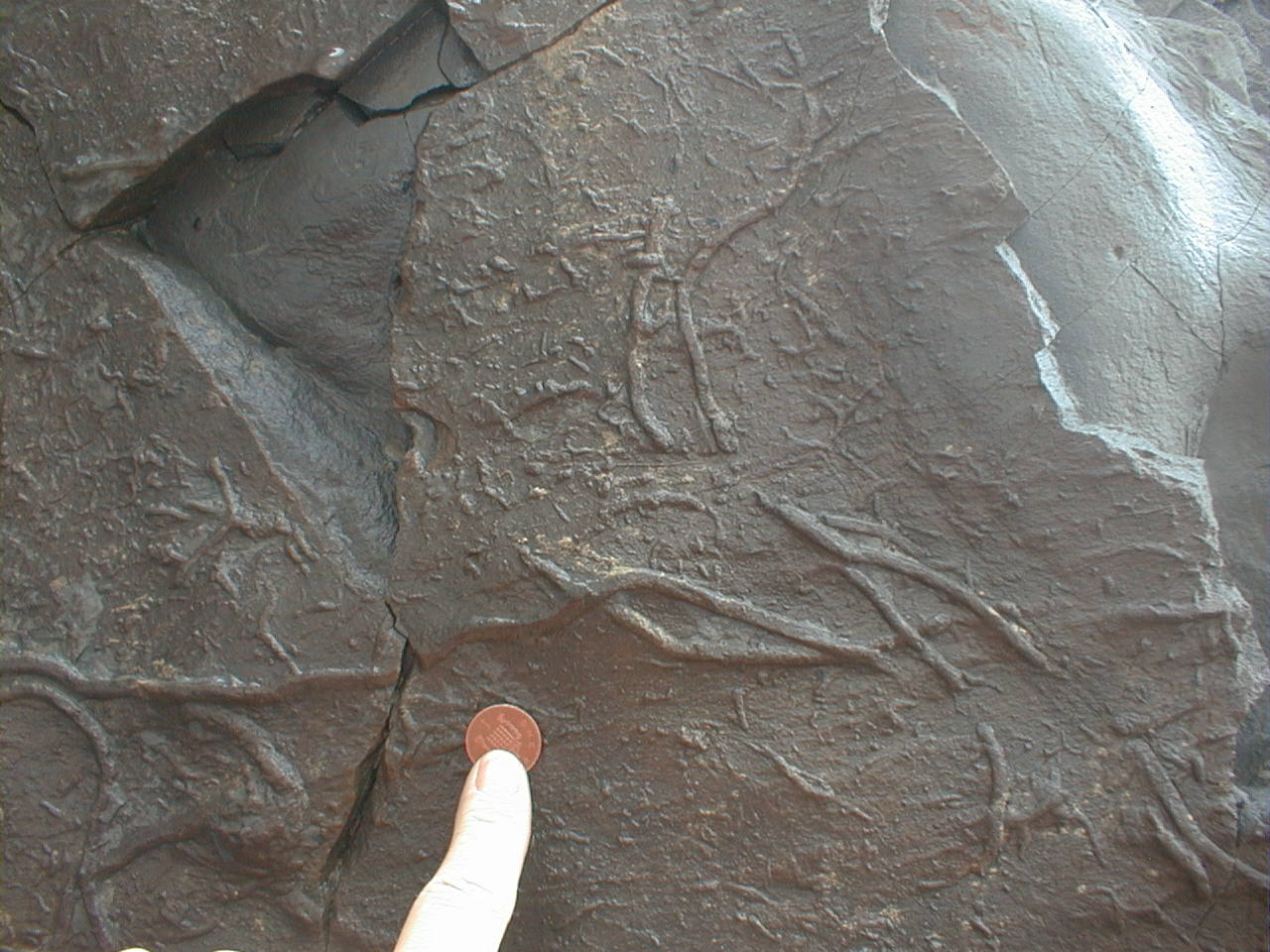
H. These structures on the base of a sandstone bed represent bioturbation
either on the sea floor (trails), or along the base of a recently deposited
sand bed (burrows).
Look at photos which show sections through the beds, such as C, L and
M. Can you see evidence of vertical or oblique burrowing? What is the
degree of bioturbation? Explain your observations.
|
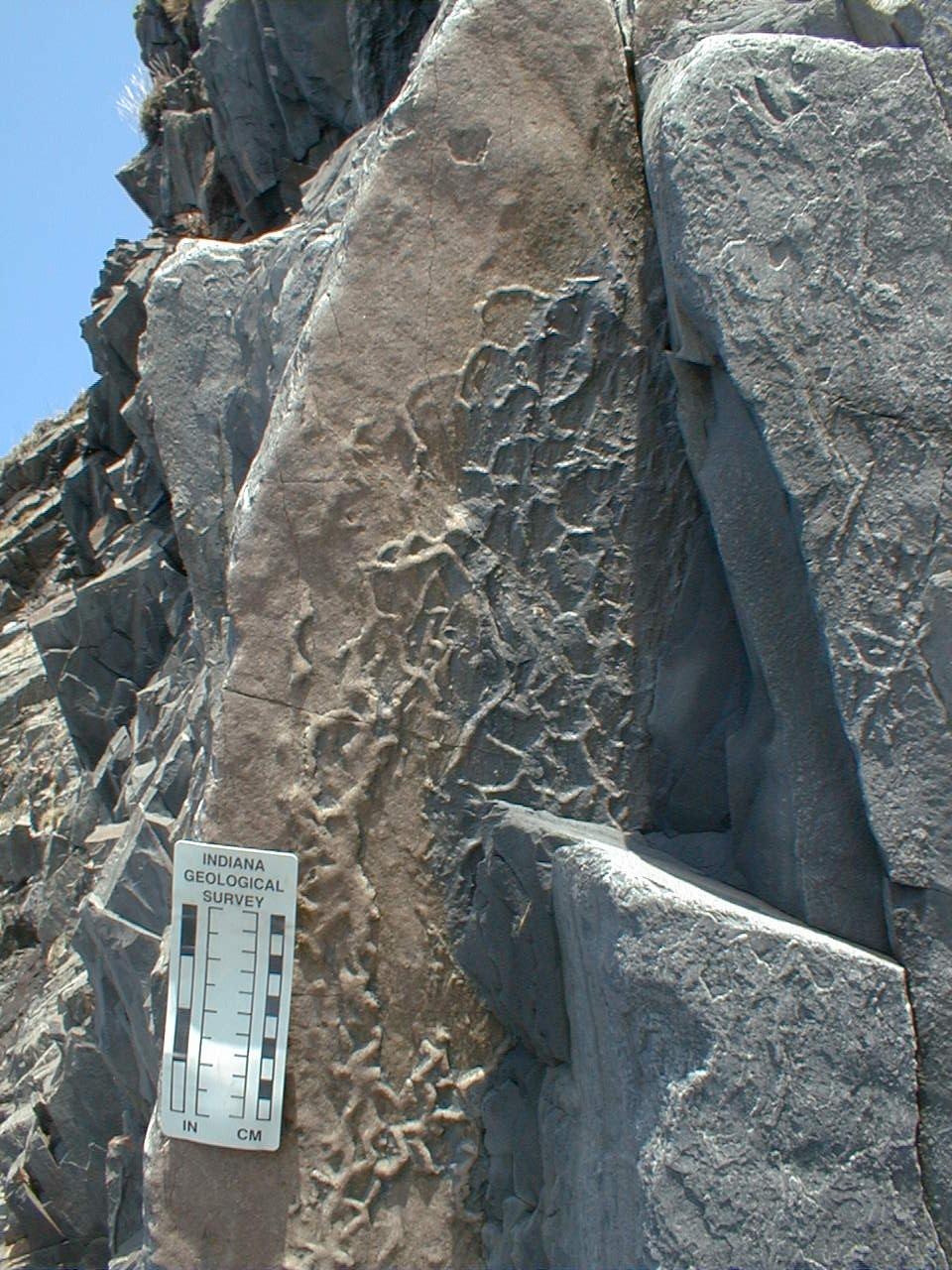
I. Another trace fossil on the base of a sandstone - this is Paleodictyon.
Investigate this trace fossil. What does it represent, in terms of animal
behaviour, and what can it tell us about the sedimentary environment?
|
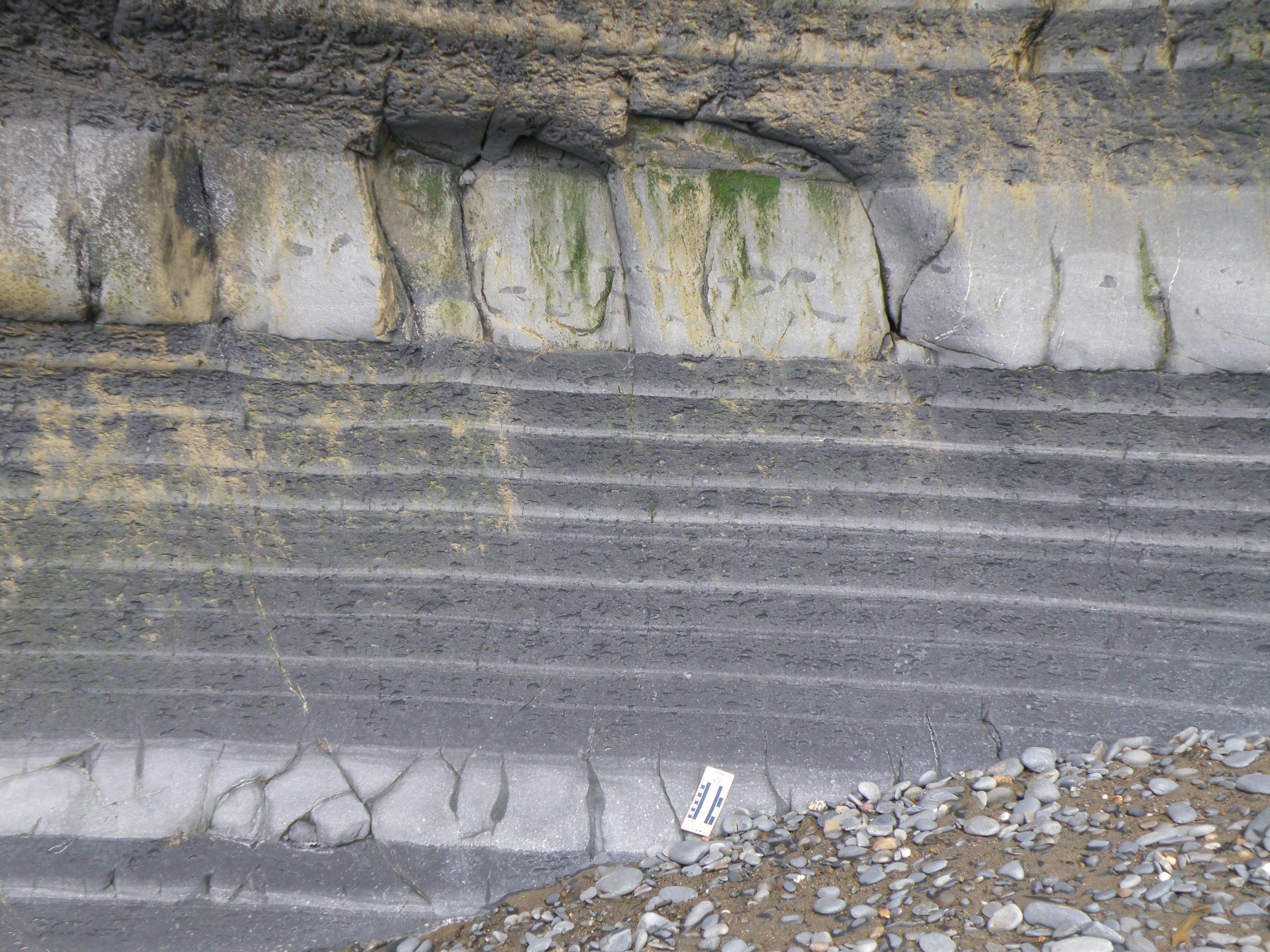
J. Interbedded fine to very fine sandstones (light) and mudstones (dark).
Study the outcrop in detail. How can you explain the varying thickness
of the sandstone beds? What gives the mudstones their dark colour?
|
|
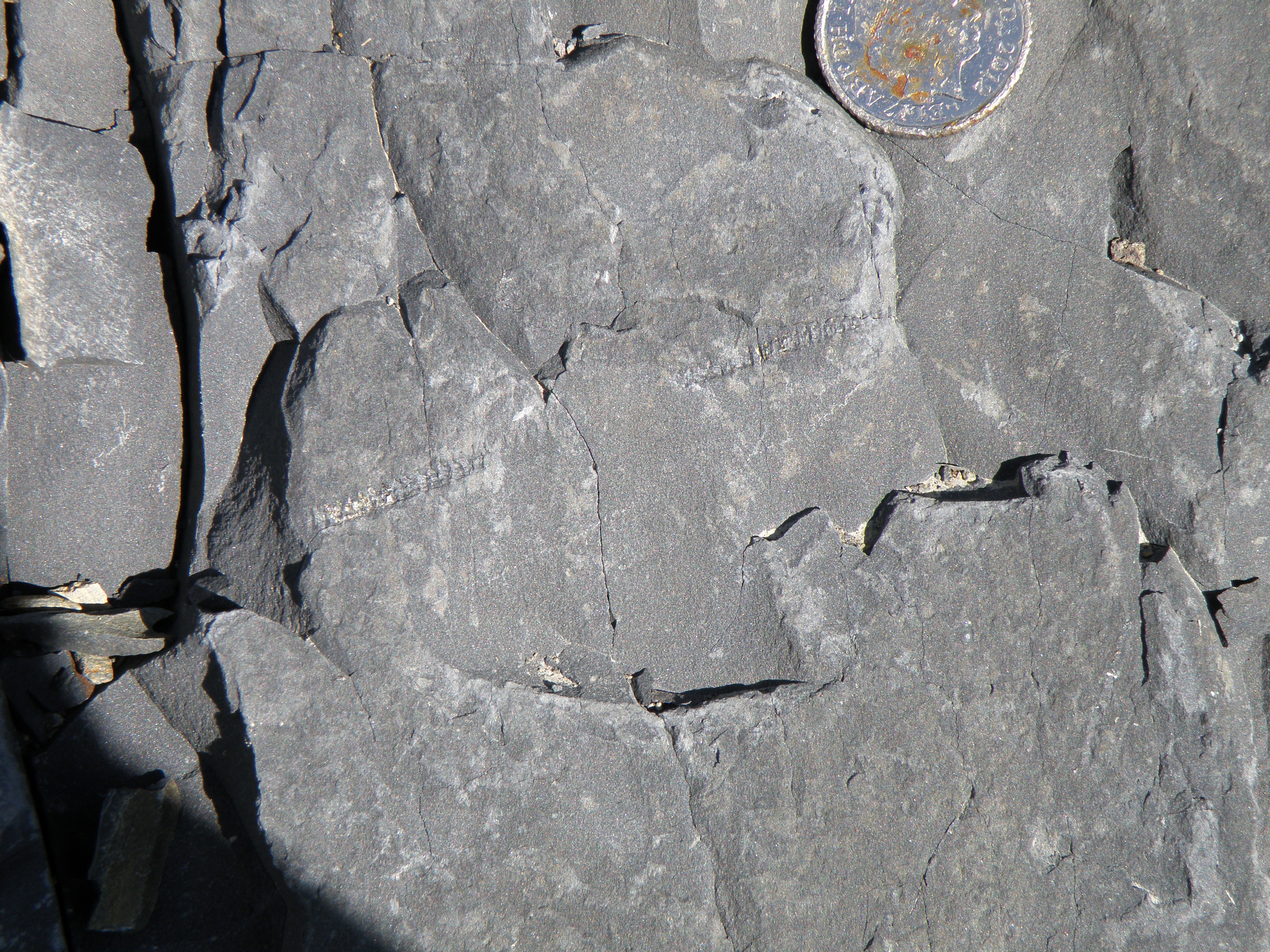
K. Close-up of a fossil in a mudstone bed. Fossils are rare in these outcrops,
but these are found from time to time (especially if a large group does
a systematic search!). 10p coin for scale.
What is the fossil? How did these organisms live? What does it tell us
about the sedimentary environment?
|
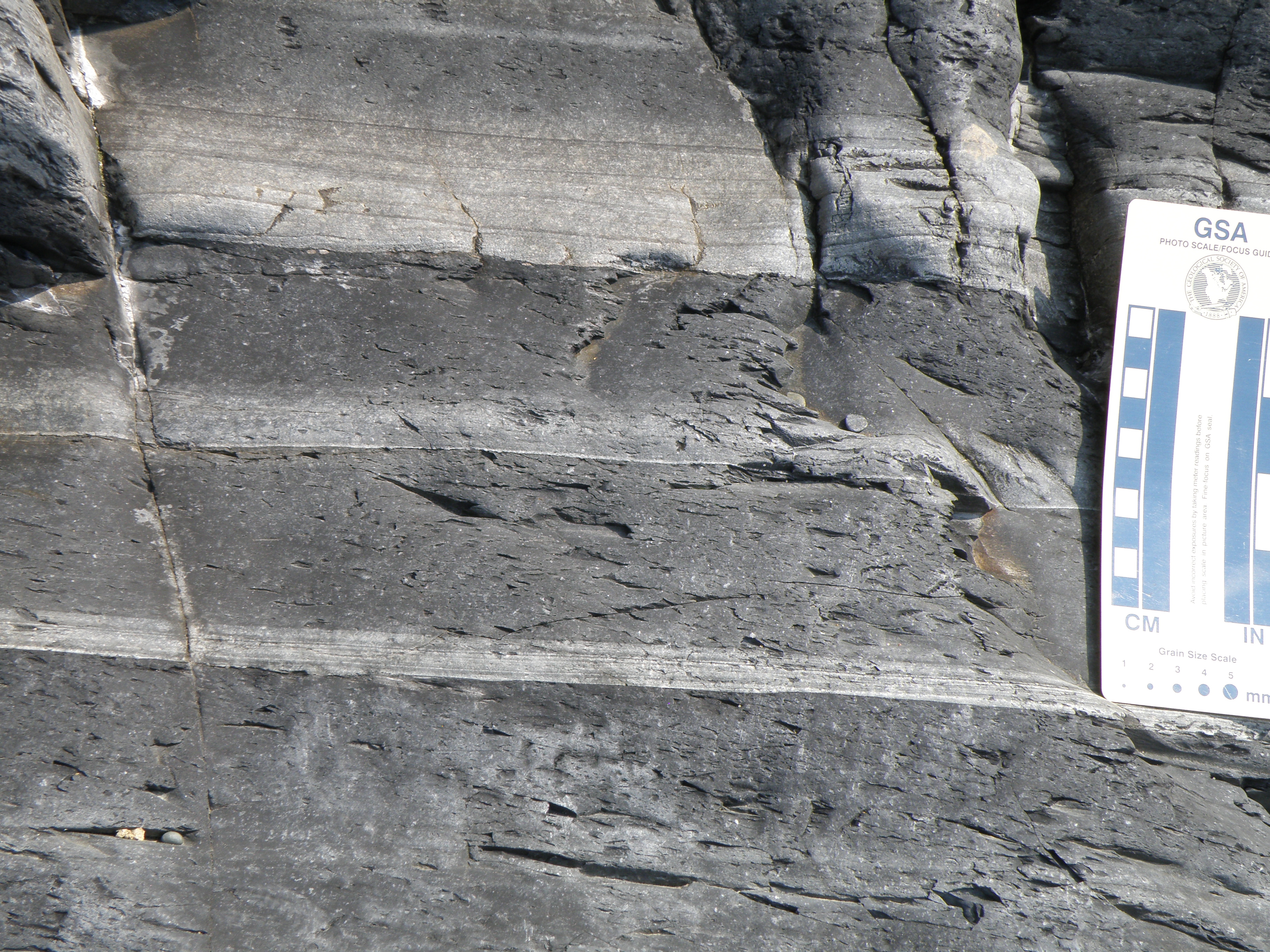
L. Interbedded fine to very fine sandstones (light) and mudstones (dark).
Study the outcrop in detail. What sedimentary structures are present
within the sandstone beds? Interpret these in terms of flow conditions.
|
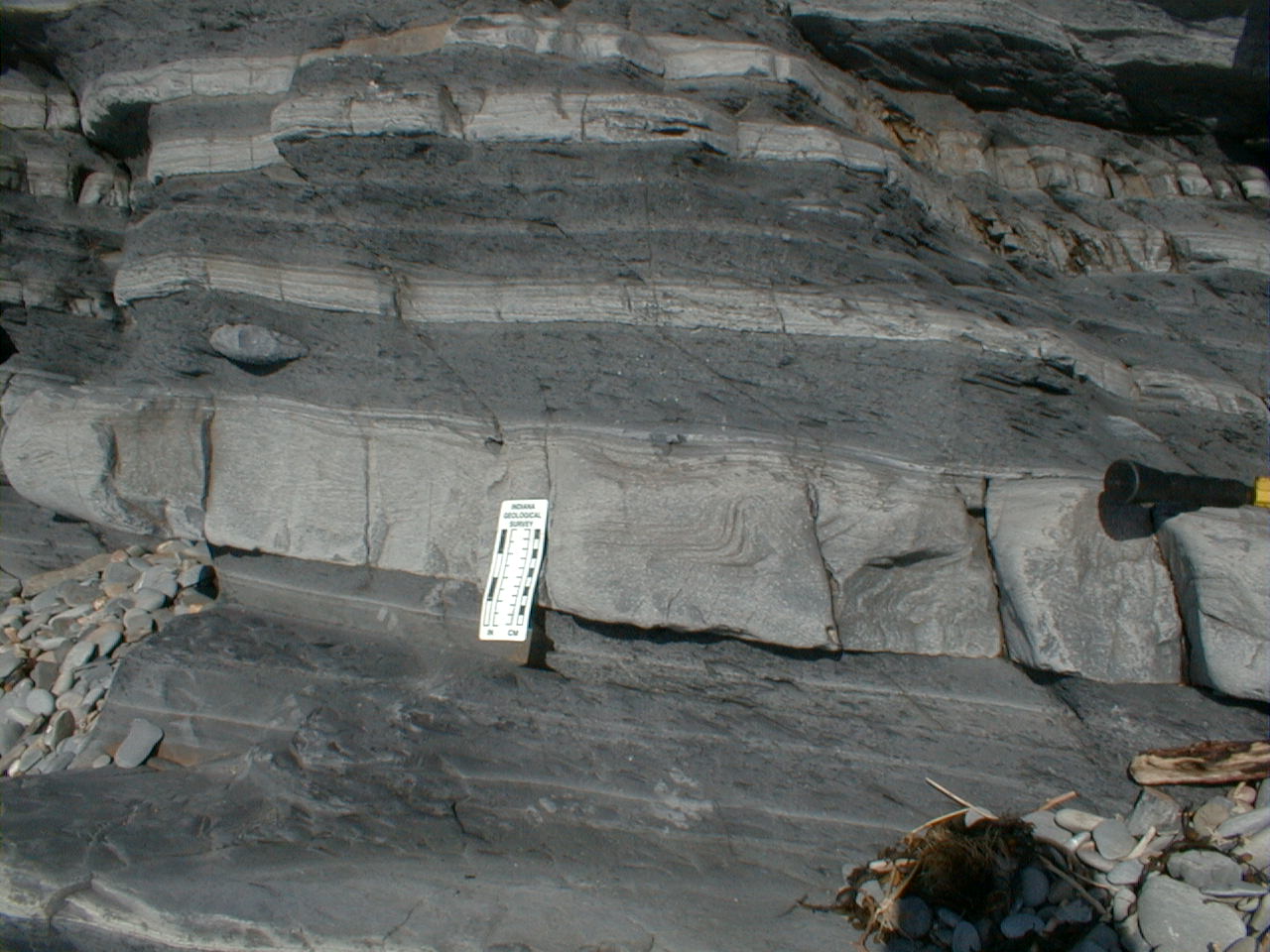
M. Interbedded fine to very fine sandstones (light) and mudstones (dark).
What are the structures within the thick sandstone bed? How did they form,
and what can they tell us about rates of deposition? |
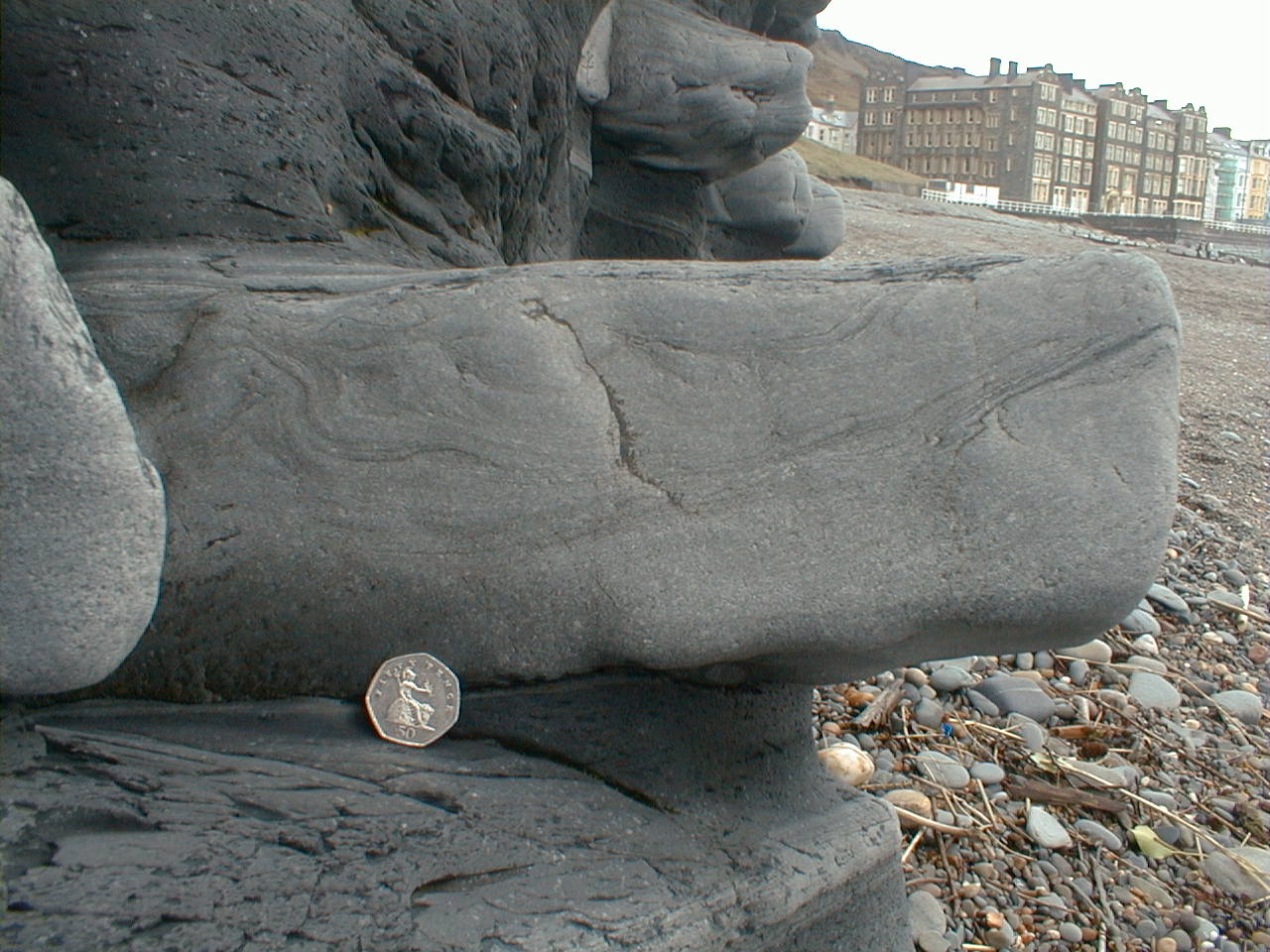
N. Close-up of another sandstone bed, showing similar structures to M.
|

The logged section
Before you start logging, look carefully
at the foreground and background in the photo below left. Can you match up beds,
or groups of beds? What can you conclude from this?
|
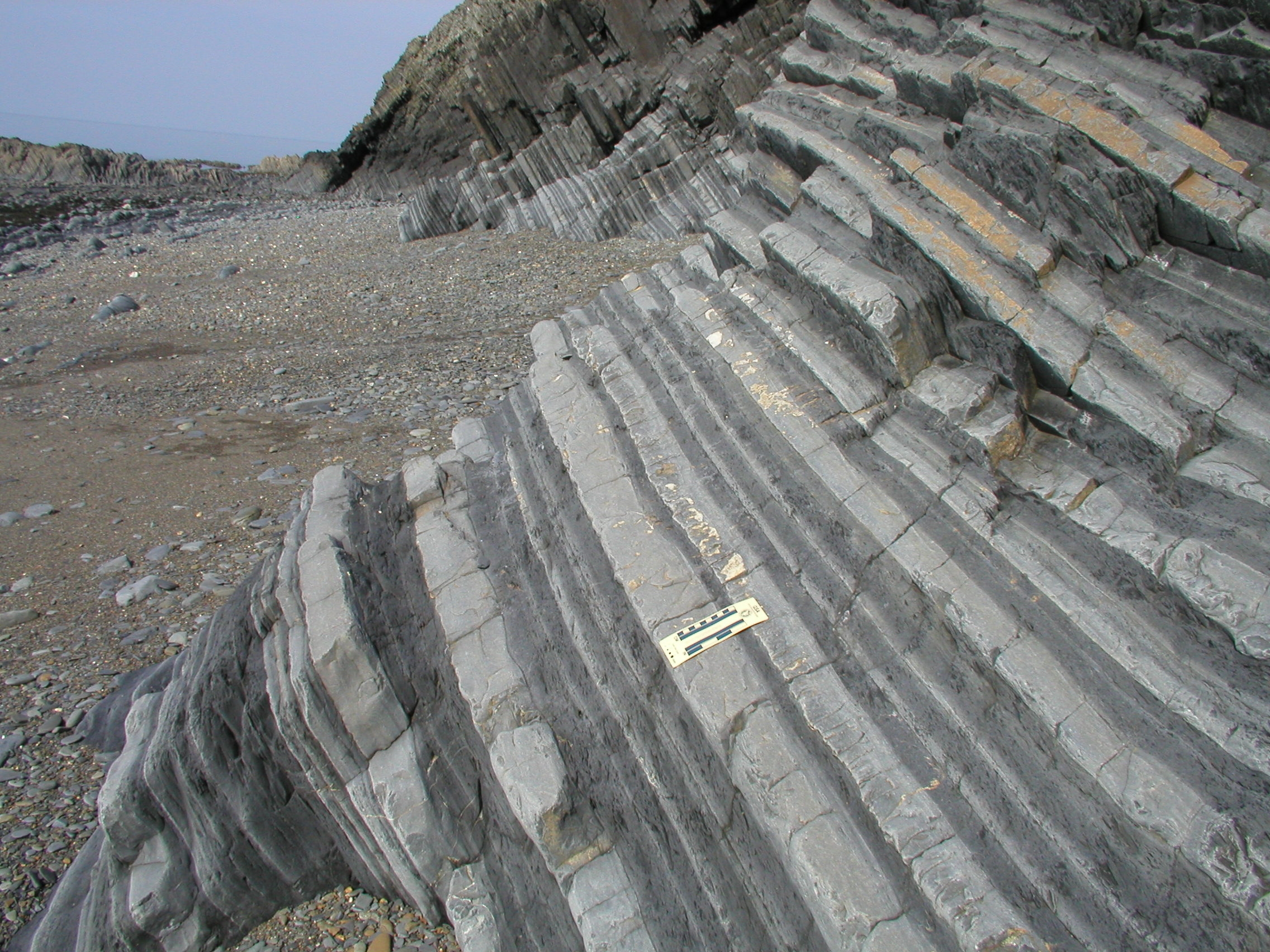
This image shows the section to be logged, in strata which dip quite steeply
to the east.
Which way does the section young? Record your evidence - the close-up
images below may help. Now it's time to start logging - follow the instructions
in today's handout, and the logging instructions in the reference section
of the Field Guide.
|
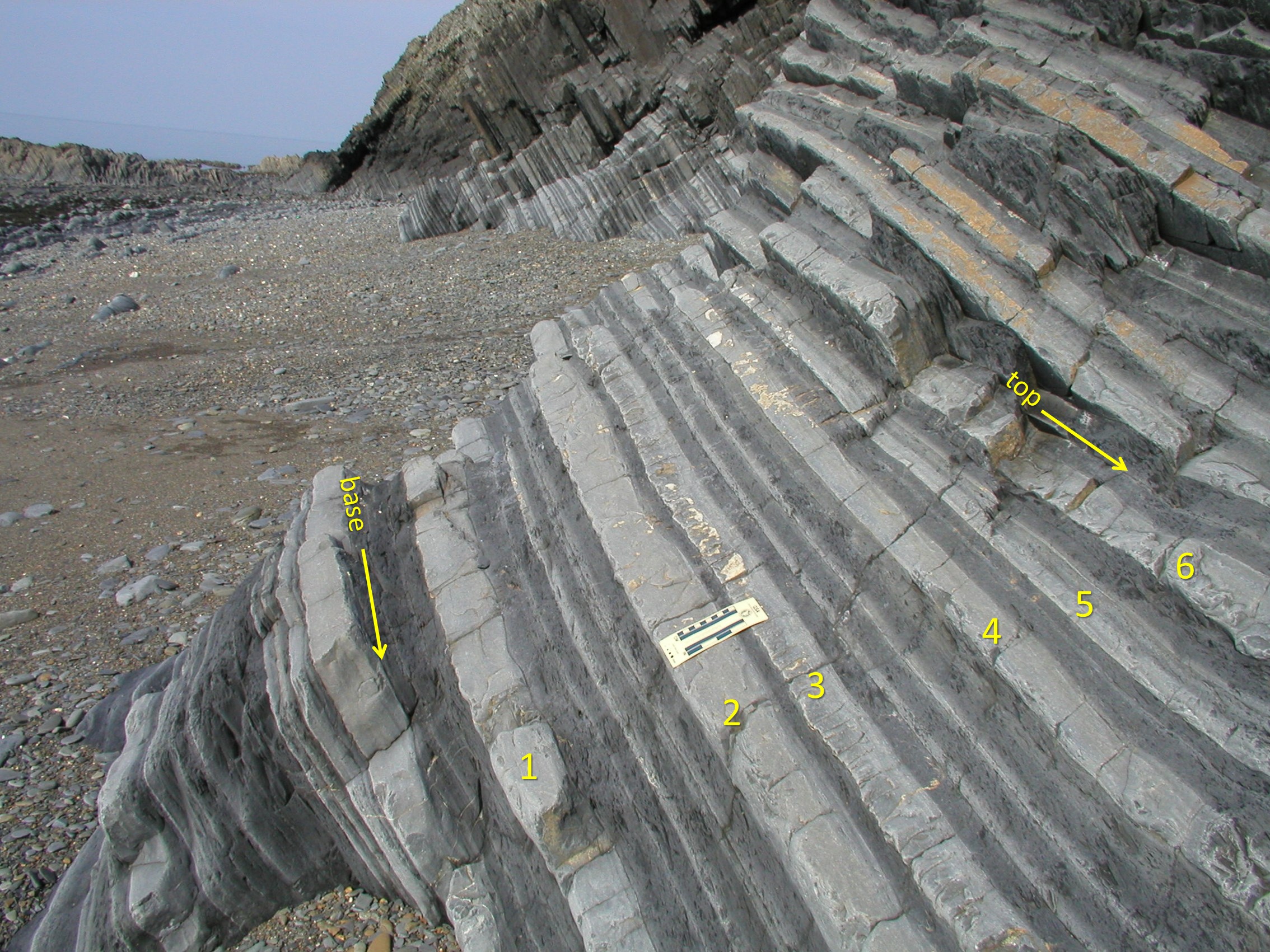
The base and top of the logged section are marked, with the thicker sandstone
beds numbered for reference. You need to decide how to divide up the rest
of the section.
The base of the section is taken at the top of a sandstone; the top of
the section is within a mudstone interval. Measure thicknesses (Tip:
use a ruler on the full-size image on the screen), and convert them to
true thicknesses using the scale - the lefthand side of the scale is 10cm,
with 1cm divisions.
|
By following beds along strike, we
can see additional features. When logging, it's often not possible nor desirable
to stick to a single straight line section through the outcrop. In dipping strata,
instead of climbing the cliff, follow the beds by eye until they come down to
beach level!
Make sure to look upwards for features
of interest on the bases of sandstone beds.
Additional information:
the sandstone beds are all rather similar: all are poorly to moderately sorted,
and thin sections show that they are lithic wackes to lithic arenites. Beds
1, 3, 4 and 6 grade from fine sand at the base to siltstone at the top. Bed
2 grades from medium sand up into siltstone. Bed 5 grades from very fine sand
up into siltstone.
The mudstones are dark grey in colour,
sometimes show fine lamination, and are often cleaved. Grain size ranges from
silt to clay. Cleavage is steeper than bedding.
Drawing and interpreting the log
You should now have acquired a substantial
amount of information for the sedimentary sequence shown on your log. This includes
lithology, sedimentary structures, fossils and field relationships. Your task
now is to draw up the log and interpret it. See today's handout for details
of what is required.

Relax for a minute or two...
See Aberystwyth from a different
perspective. Take a ride
on the cliff railway, or fly a drone
along the coast.
The large building at the north end
of the promenade, a former hotel, is now a hall of residence for Aberystwyth
University students. Streetview even allows you to see inside the building!
The building was damaged during the powerful winter storms of 2013-14.

Next locality
Make sure you've completed all the
work for this locality. Now we can get back on the virtual coach and head off
to our next stop at Borth

This page is maintained
by Roger Suthren. Last updated
21 May, 2021 6:25 PM
. All images © Roger Suthren unless otherwise stated. Images may be re-used
for non-commercial purposes.
![]()
![]()
![]()